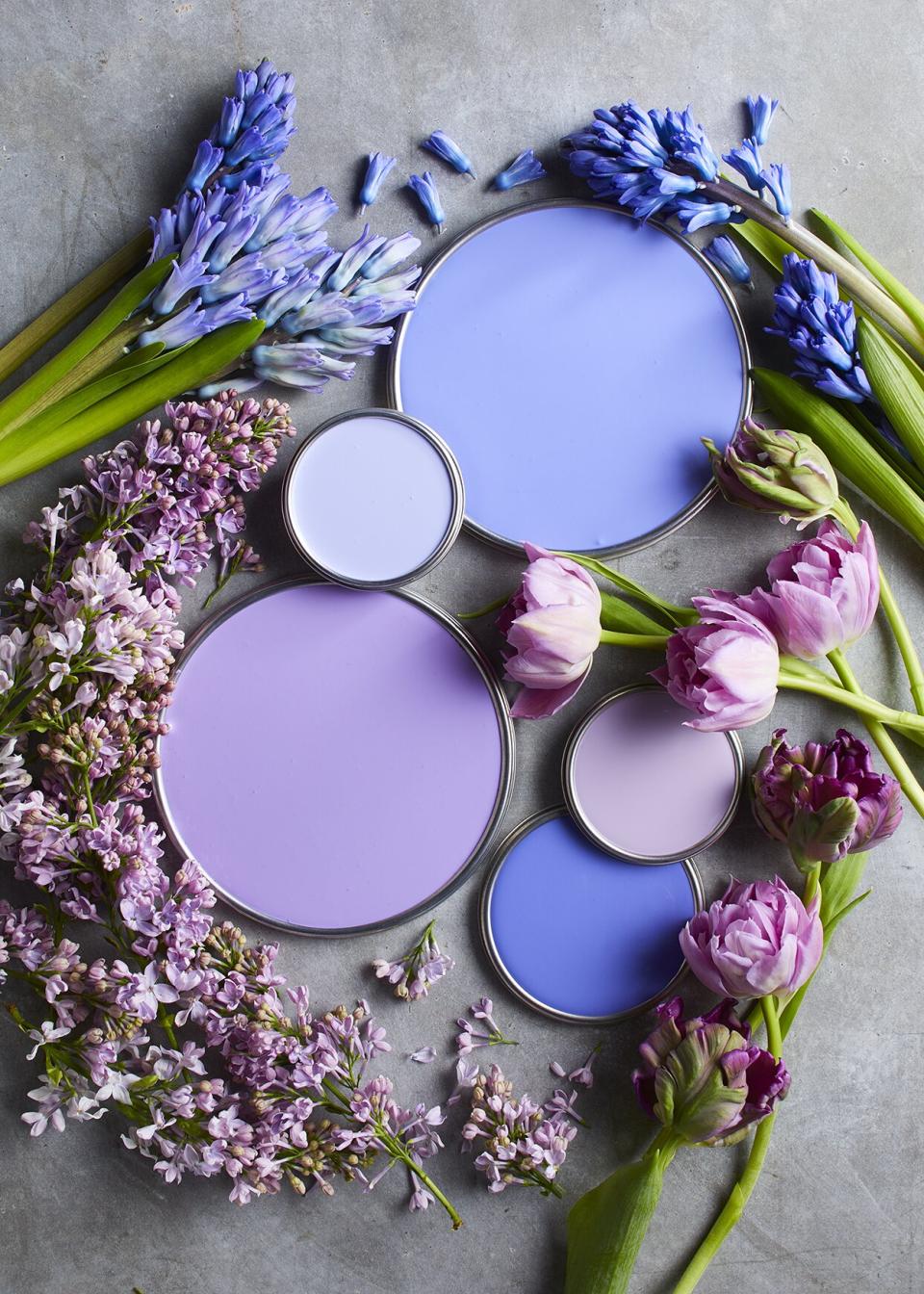How Long Does It Take for Paint to Dry? Top Factors That Affect Dry Time
If you are planning a room makeover that includes a fresh coat of paint on the walls, one key factor to consider is dry time. Knowing how long it takes for paint to dry is essential for a flawless final result— a smooth, even texture with no smudges or drips. The phrase "patience is a virtue" certainly applies to paint dry time, so when in doubt, giving your walls a little extra time to cure is always a good idea.
Paint might appear dry on the surface and the top layer might even be dry to the touch, but that doesn't necessarily mean walls are fully dry or ready for another coat. There are many things that affect how long it takes paint to dry, including the type of paint and tools used, as well as external factors such as the weather. Here is what you need to consider before you get started so you can paint your walls like a pro.

Carson Downing
Dry Times for Each Type of Paint
The chemical formula varies for each type of paint, so each has a slightly different dry time. Generally speaking, latex and acrylic paints dry faster than oil-based paint.
Latex paint will feel dry to the touch after an hour, but it is recommended to wait for four hours before applying another coat of paint.
Acrylic paint dries even faster; it is dry to the touch after 30 minutes and ready for a second coat after two hours.
Oil-based paints have a much longer dry time; it generally takes up to eight hours to be dry to the touch and a full 24 hours before a second coat can be applied.
If you are using primer, allow up to four hours for it to dry before applying paint. For the most accurate dry times, follow the paint manufacturer's instructions.
Spray-Paint Dry Time
When used in the recommended weather conditions, a coat of spray paint requires a dry time of two to four hours before being ready for a second coat, and 24 hours to fully dry. Some materials are more porous than others and will need multiple coats and therefore a longer dry time, so follow the manufacturer's directions to achieve your desired result.
Factors That Affect Paint Dry Time
There are numerous factors in addition to the type of paint that affect dry time. Weather conditions, the room you are painting, and the tools you use can all affect the dry time; consider the following before you get started.
Temperature and Humidity
High temperatures and humidity cause paint to dry slower, which is why it is recommended that you apply oil-based paint when temperatures are between 40 and 90 degrees F, and latex paint when temperatures are between 50 and 85 degrees F. This is recommended for both indoor and outdoor paint. Controlling indoor temperature is easier of course—simply regulate your thermostat so that it's within the recommended range. If humidity levels are above 50%, dry time will be longer but can be cut down slightly with the use of a dehumidifier and air conditioning.
Room Ventilation
Ensuring the room you're painting is well ventilated is important not just for dry time but also for your health. Wear a mask while you paint and open up doors and windows to allow fresh air into the space.
Proper Paint Tools
The best way to make sure each coat of paint dries evenly is to use the right tools and apply a thin, even layer of paint with each coat. Using a paint roller will help distribute paint evenly and apply a thinner layer than a brush, which often holds more paint than needed, leading to unwanted drips. Some areas, such as corners or trim, require the use of a paintbrush, but for large, flat surfaces, a roller will achieve the best result.
Quick-Drying Paints
Many brands have developed quick-drying paint formulas that significantly cut dry time. Some are dry to the touch as quickly as 15 minutes and fully dry within four hours. Most contain primer and are designed to provide one-coat coverage, which also decreases dry time since you don't need to wait for multiple coats to dry. When shopping for paint, consider quick-drying paint formulas when pressed for time or you need to be able to use the area in a short timespan.
Related: What Are Zero-VOC Paints? 9 Brands to Add Color to Your Home Without Harmful Chemicals
Does Paint Dry Lighter or Darker?
Perhaps you've had that moment of doubt when the paint color you selected looks different than when you first started applying it. Paint tends to look slightly darker once it dries. To ensure that the color you purchased looks the same as the paint swatch, always mix your paint properly before you get started. Most retailers provide a stirrer when you purchase a gallon of paint. It's important that you give the paint a good stir before getting started, as well as during long projects, otherwise you might end up with uneven color on your walls.

